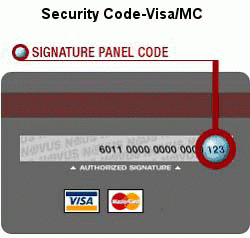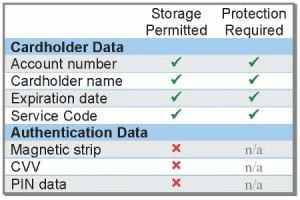
• Home •
Victim´s Story •
Fraud Prevention •
Project GSO •
Hall of Shame •
LINKS •

Where do credit card fees come from?
A Credit Card Boom
by Bryan Johnson
It is known by some, but not all, that businesses pay fees in order to accept credit cards as a form of payment. In fact, over 7 million merchants in the U.S. accept credit cards. During 2006 they collectively paid over 30 billion in fees to offer customers that convenience.
Despite the size of the industry, its a mystery to most as to who is pocketing these billions of dollars in fees and why it has to be so unbelievably complicated. I had a CPA tell me the other day, “I’m a smart guy. I understand numbers, pricing and reconciliation, but for whatever reason I just cannot get my head around credit card processing fees.” He’s not alone. Hopefully this article will clear up some of that confusion as I provide some context about where credit card fees come from, who’s making the money, and how fees and rates are determined.
Banks make roughly 80% of all credit card processing fees
Yes, banks are the biggest benefactors of consumers using plastic. Banks co-issue debit and credit cards with Visa and or MasterCard (AMEX and DISV don’t issue cards through banks). Visa and MasterCard are essentially membership associations owned by the issuing banks. For example, Visa is a membership association of over 13,000 banks nationwide.
Banks make money every time a card they issued is used to purchase something. For example, let’s assume that a business is paying an effective rate of 3.5% to accept credit cards (that 3.5% is usually comprised of a discount rate and a per transaction fee but I just used a flat rate for simplification purposes). Roughly 80% of that 3.5% is going to the issuing bank. The rest of the 20% is divided among Visa or MasterCard, the credit card processor, and if there is one, the Independent Sales Organization (ISO).
How do banks justify their fees?
Credit card usage has seen explosive growth in the past 20 years for a number of reasons. Consumers get 15 to 45 days to pay original purchases, rewards and other perks, a line of credit for extra spending power, fraud protection, a monthly accounting of all purchases, and plastic is more convenient than cash or check.
All of these conveniences cost banks money. They have costs associated with fraud, bad debt, customer support, rewards and other perks, and float (they pay for your purchases before you pay them). Putting two and two together here on the creation and payment of fees, banks come up with rewards programs but merchants end up picking up their tab!
Continuing our example, if you buy movie tickets for $20 and the movie theater is paying 3.5%, the bank that issued that credit card would make $0.56 ($20 x 3.5% = $0.70, x 80% equals $0.56). Visa and MasterCard add their respective fees of .0925% and .0950% on top of what the banks charge (Note: that’s 9.25 and 9.50 basis points. 100 basis points equals 1%). Adding the fees from the bank and Visa or MasterCard together form what is called ‘interchange’.
You now understand why you find a credit card offer in your mailbox everyday. Outside of the 18% interest rates, annual fees, and late fees, being a card issuer is a lucrative business! Banks are making money on both the front and back end.
That seems simple enough, why does everyone say it’s so complex?
There are over 100 different interchange ‘rates’ or ‘categories’. The particular rate that is charged on any given transaction depends on a number of variables, including:
1) The type of card that is used in the transaction i.e. debit, credit, rewards, or business card, international, etc.
2) Where the card is used i.e. restaurant, retail, gas, business to business, ecommerce, etc.
3) The method of usage i.e. swiped, over the phone, or via ecommerce.
4) What information the business captures during the transaction i.e. name, address, tax ID, tax amount, unit description, etc. (the information required is a whole other layer of complexity).
5) When the transaction is submitted to the processor for settlement and funds transfer after the initial authorization.
As you can see, it’s a very complicated matrix. Very few people, including those who’ve been in the industry for years, really understand interchange.
Qualifying for different rate categories and getting hit with downgrades can be expensive Merchants can often do more than they think to better manage the credit card fees they pay.
For example, transactions can be ‘downgraded’ when they don’t meet interchange requirements. Reasons for downgrades include not capturing the correct information when processing (such as billing address), settling the transaction after a certain period of time, not swiping the transaction and many more.
Learning how to recognize these penalties and then making the appropriate adjustments can help you lower your fees.
One example is if an a restaurant employee hand keys your credit card number into the point of sale system because the magnetic strip can’t be read, the transaction falls into a different rate category . The transaction is penalized because ‘non swiped’ transactions carry more risk and therefore higher interchange fees. The increase in rate can be significant ranging from 30 basis points to 1.6%, or more. Actual rates of course vary according to the fee structure you have with your existing provider.
Different rate categories and downgrades are the dirty little secret for merchant service providers. It’s where they make most of their margin because they offer artificially low rates and don’t disclose higher market ups on transactions that don’t fall into a specific rate category. Too many merchants fall for this and think their paying the single, highly competitive rate that was advertised.
A quick search of merchant service providers will demonstrate that non disclosure of fees is a standard practice. See two examples here.
Your undecipherable monthly credit card statement.
As icing on the cake, the unreadable format most merchant service providers use to present this information to you on a monthly basis doesn’t help. Of course, the format used is not because they have no other option, it’s because that’s what makes them the most amount of money.
The frustration with credit card fees
Some merchants accept credit cards because they find them to be a easier method of accepting money from customers. Most, however, accept them because they have no other choice and the costs can be significant. Many merchants and advocacy groups have cried foul lately with Visa and MasterCard increasing ‘interchange’ fees over 117% in the past five years while maintaining over 70% market share. The Card Associations have been accused of being monopolistic.
Interchange has come under increased pressure lately.
A few years ago, Wal-Mart won a class action lawsuit against Visa and MasterCard. They claimed that interchange was being improperly priced with debit cards having the same interchange rate as credit cards. Among other things, they argued that debit cards should be have a lower interchange rate because money comes directly out of the account versus a credit card where there is 15 to 45 days between purchase and payment. The courts agreed and awarded Wal-Mart and other retailers billions of dollars in compensatory damages. There are currently a number of other legal battles against the Card Associations surrounding interchange.
Reaons why higher credit card fees are charged
There are quite a few ways that merchant service providers can structure the pricing of credit card fees. Some companies will offer a ‘Qualified’ rate of something like 2.69% and $.30 and then a ‘Non Qualified Rate’ of 3.47% and $.30. There are similar variations with three and four different categories instead of two. Sometimes companies will offer a category only for ‘Debit’ cards and other times they will bundle the credit and debit card rate into one. Neither one is necessarily better than the other. It just depends on what the other categories are and the price of each.
Merchant service providers can typically choose any of five or six different pricing structures when offering credit card processing services. Regardless if you have two, three, or four different rate categories, there are reasons why certain cards will be charged the respective rates.
Most of the time, if you process a consumer credit or debit card and you successfully capture their correct billing address (known as Address Verification Service, or AVS) the transaction will fall into the ‘Qualified’ bucket and get charged the Qualified rate. If you don’t correctly capture the billing address, then the transaction will be ‘downgraded’ and will fall into a category with a higher rate.
Corporate, business and international cards typically fall into the higher rate categories regardless of whether AVS is captured. Some rewards cards also fall into these higher categories.
Other reasons why transactions may be assessed a higher rate include not settling transactions within 24 to 48 hours, authorizing credit cards and then capturing them after a predetermined amount of time, and authorizing a credit card and then capturing it for a different amount.
While there are some standard guidelines in the industry, processing companies have discretion about what types of cards fall into what categories and for what reasons. So in this regards, it’s always difficult to do a direct comparison from one provider to the next.
It’s helpful to always understand all of the different categories that your provider will be charging and the general guidelines they’ve assigned to each.
Merchants are prohibited from storing CVV2, CVC2 & CID per PCI standards
A Card Verification Value code, CVV, (CVV2 for Visa, CVC2 for MasterCard and CID for AMEX) is the three or four digit number located either on the front or back of a credit or debit card.
Merchant’s can request the CVV code from card holders as another way to screen fraudulent transactions. The idea is that someone using a stolen credit card is less likely to have this code so they will be unable to complete the transaction. With most payment systems, you can adjust settings to automatically reject transactions where the CVV code does not match the card number.
The effectiveness of this code is limited to the ability to keep it out of the hands of hackers and thief’s, which is why it is prohibited by PCI Standards from being stored.
For merchants who charge customers on a recurring basis, the CVV code can be used with the initial transaction but cannot be stored for future transactions.
The use of the CVV code does not affect the rate you are charged. It only helps with reducing fraudulent transactions by verifying the identity of your customers. The CVV code is not needed to handle chargeback requests.
So if you’re currently storing CVV numbers, it may be a good idea to reassess your procedures and delete them from your system as soon as possible. Here is a simple graph demonstrating what can and cannot be stored.
© by GSO • Contact

